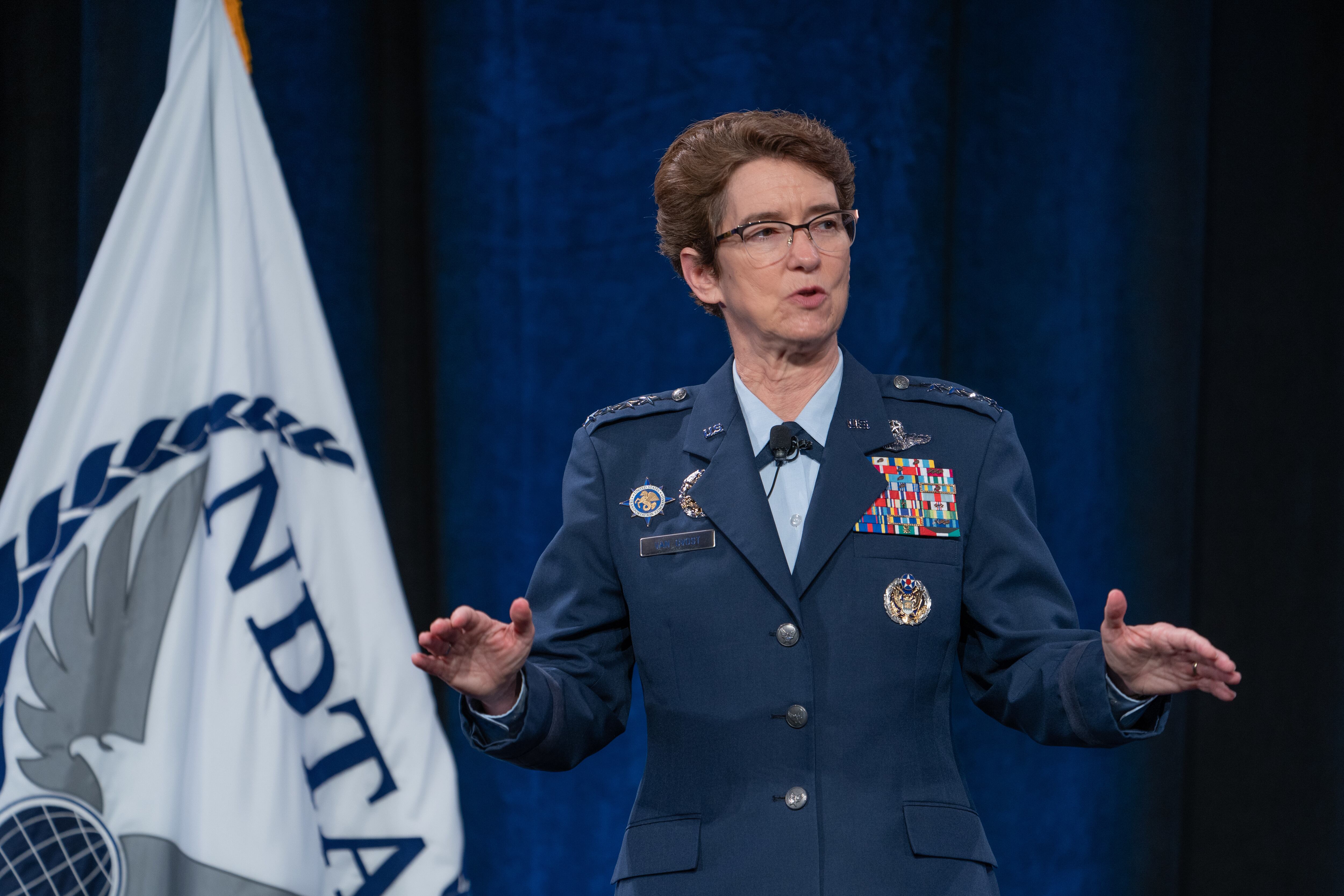WASHINGTON — If a war against a major adversary breaks out, it’s going to require the military to resupply troops at a pace it hasn’t seen in a long time, Air Force Gen. Jacqueline Van Ovost, head of U.S. Transportation Command, said on Wednesday.
And to keep up with that frenetic tempo, TRANSCOM is going to have to use machine learning and artificial intelligence to streamline its logistics operations, Van Ovost said in an online conversation hosted by the Center for Strategic and International Studies.
“We can’t afford to sift through reams and reams of data” in a major war, Van Ovost said. “We really do need to apply machine learning and artificial intelligence to turn that data into knowledge, for which we can make decisions. Creating that decision advantage is going to give us that time and space and options for senior leaders to come up with different options to reduce risk, to increase effectiveness.”
Van Ovost said American allies and partners, as well as its potential competitors, are already making fast progress in these areas, and the U.S. must do the same at all levels to be more effective and efficient.
“That’s the coin of the realm,” Van Ovost said. “If we brought [data] all together, we’d absolutely have a better picture of what we need to do, especially when we think about being jammed and unable to communicate. Having that data, and being able to make that decision at every echelon is absolutely going to increase our effectiveness, and frankly the effectiveness of our allies and partners as well.”
Van Ovost expressed interest in recent work studying the feasibility of using rockets to rapidly move large cargo loads anywhere in the world. TRANSCOM has signed research agreements with companies such as SpaceX and xArc to see how the technology might work, including cargo loading and determining flight frequency.
“I think, ‘Why not?’” Van Ovost said. “If something is that critical, whether it’s food or an electronic part that you absolutely have to have, why wouldn’t we use that opportunity?”
Space companies are already trying to sort out how to send rockets to Mars and safely land them, she said, and safely landing them back on Earth would not be that different, aside from slightly greater gravity.
“It’s a little interesting to be able to think that you could fly a C-17′s worth of stuff somewhere around the world in an hour,” Van Ovost said. A C-17 can fly roughly 80 tons of cargo.
Van Ovost also suggested this could be a way to swiftly deploy supplies for humanitarian missions quickly around the world.
TRANSCOM signed cooperative research and development agreements, or CRADAs, with SpaceX and xArc in spring 2020, and with Blue Origin last December.
Van Ovost also stressed the need to modernize, and she said TRANSCOM must recapitalize aging and outdated assets ranging from steam ships to aerial refueling tankers.
“Our ships are 46 years old in the reserve fleet,” Van Ovost said. “We have steam ships — you can’t even find engineers that work on steam ships, we have to keep 60, 70-year-old engineers around to keep running them. We must recapitalize that.”
The KC-10 Extender is also growing more expensive to keep in the air, Van Ovost said, and the military needs to increasingly work on replacing the KC-135 Stratotanker.
Those tankers’ replacement, the KC-46 Pegasus, is a very capable aircraft even beyond aerial refueling, aeromedical evacuation and cargo, Van Ovost said. She said its Link 16 capabilities will allow it to observe the battlefield and transmit data to other elements of the military.
“We can be an alternate C2 [command and control] node,” Van Ovost said. “If we get cut off from main, can you have an airplane out there that does that work? And why not the refuelers?”
Stephen Losey is the air warfare reporter for Defense News. He previously covered leadership and personnel issues at Air Force Times, and the Pentagon, special operations and air warfare at Military.com. He has traveled to the Middle East to cover U.S. Air Force operations.





